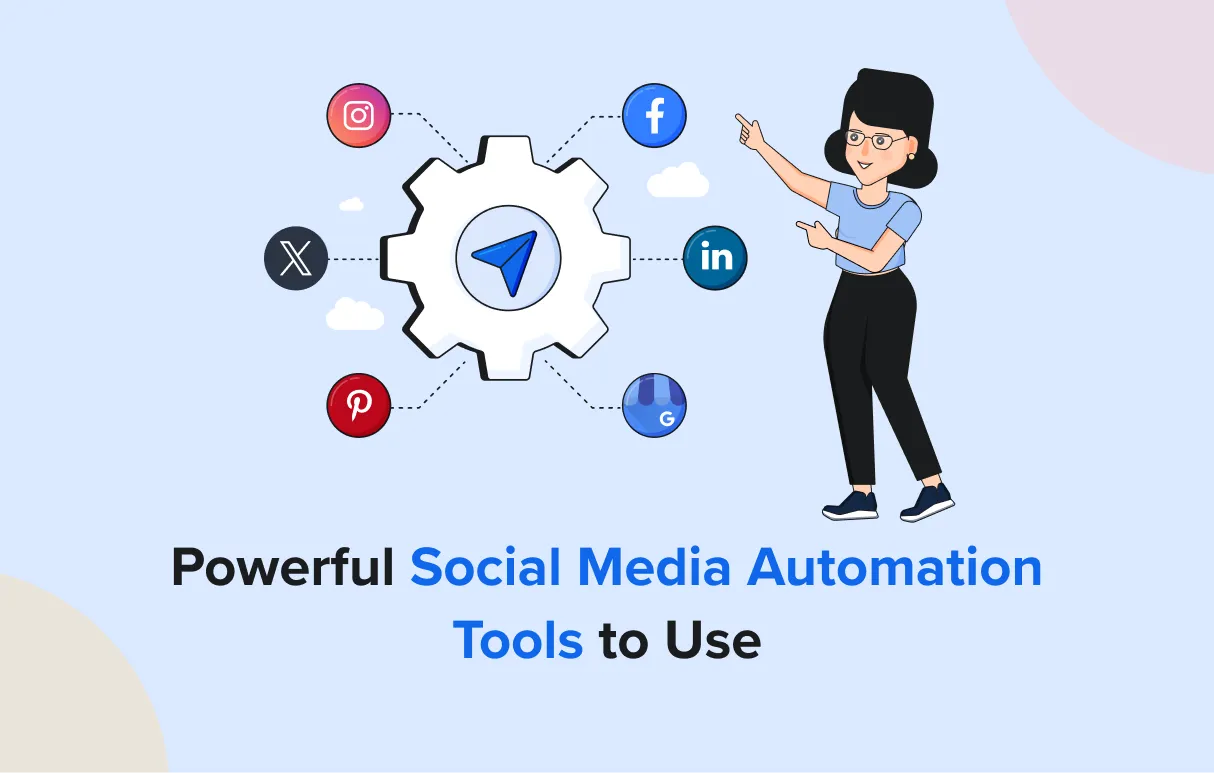With 5.56 billion people using an average of 6.83 social platforms each month, social media has become a frontline for consumer insights.
And businesses must leverage these insights to stay ahead of their competitors. However, with numerous metrics across various social media platforms, it’s easy to feel overwhelmed or lose sight of the big picture.
That’s where strategy comes in.
In this blog, we’ll show you how to turn raw social data into tangible marketing results by collecting the right metrics, using the right tools, and making data-driven decisions that drive growth.
According to Statista, an average internet user spends approximately 141 minutes (i.e., 2 hours and 21 minutes) every day on social media, and most of this time is spent on Facebook, Instagram, TikTok, YouTube, and Twitter.
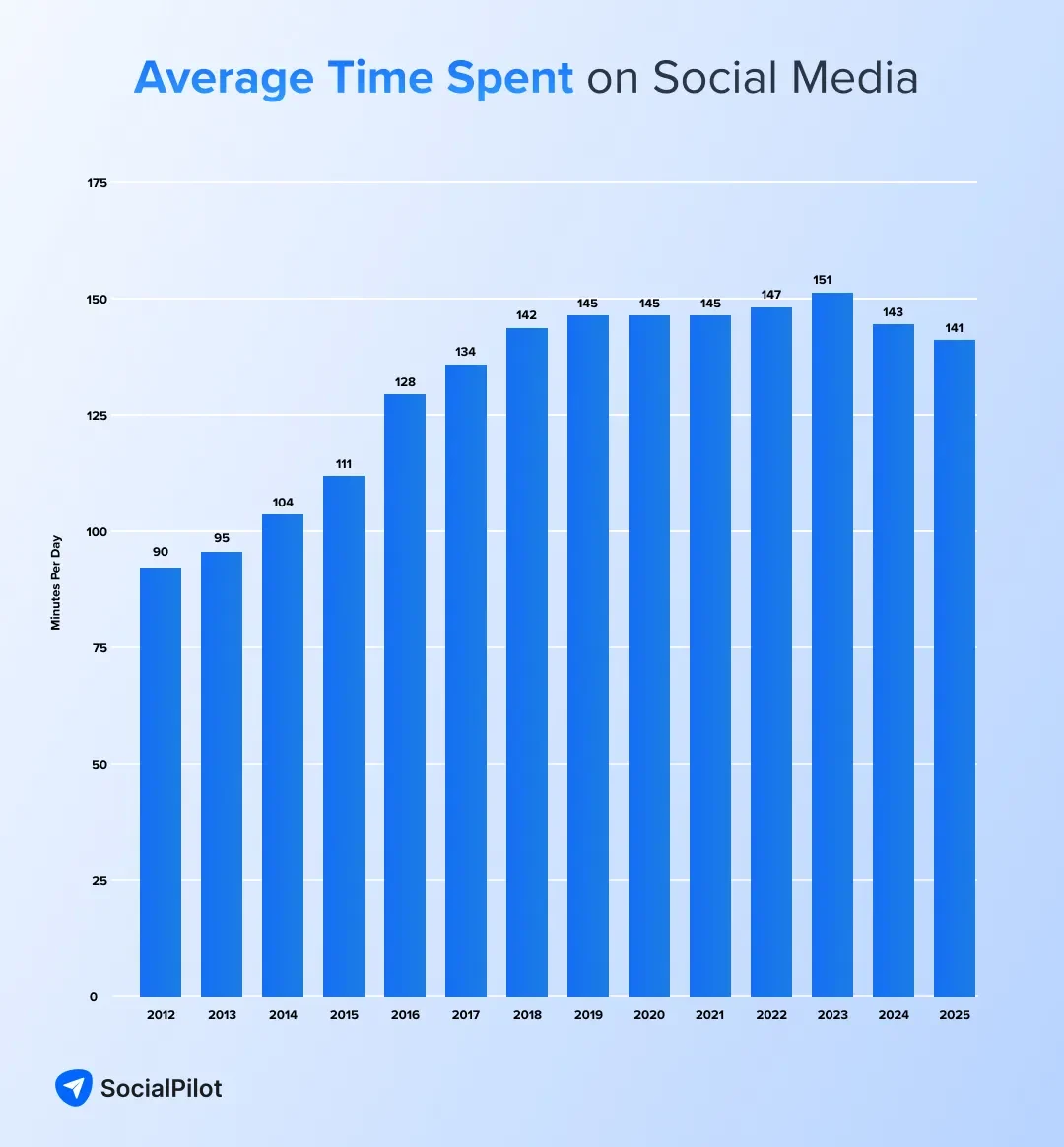
That’s a massive opportunity window for brands looking to collect data.
Social media data collection refers to gathering metrics and insights from different social channels, enabling the analysis of audience behavior, content performance, brand perception, and industry trends.
Here is what it typically includes:
- Engagement Metrics: Likes, shares, comments, saves, and DMs
- Reach and Impressions: How many people saw your post or ad
- Follower Demographics: Age, location data, gender, and interests
- Content Performance: Views, clicks, watch time, completion rates
- Sentiment Analysis: Positive, neutral, or negative reactions to your brand
- Platform-specific Actions: Retweets, pins, reactions, story replies, etc.
The data collected from social media comes in many forms – structured (like follower counts) and unstructured (like user comments or direct messages) – and when analyzed correctly, it’s marketing gold.
If you’re aiming for some serious growth on social media, then having a solid strategy is non-negotiable.
So, before you dive into dashboards and reports, here’s exactly how to get started – step by step:
1. Define Your Objectives and Goals for Data Collection
Start with your “why.” Why do you even want your business to be on social media?
Are you trying to increase engagement? Drive traffic? Convert leads?
Social media platforms collect a vast array of information. But having clear goals will help you determine what you should be tracking.
Without this clarity, you’ll collect numbers that don’t lead to real outcomes.
For example, if your goal is to boost website signups, likes won’t tell the full story – but link clicks and conversion rates will.
Take inventory of where your brand is active and ideally where it should be most active.
So, if you’re a B2B SaaS company, you must most likely use platforms like LinkedIn and Twitter (X).
But if you are an eCommerce store or a fashion brand, Instagram, Pinterest, and TikTok must be your go-to platforms for brand building.
Similarly, for local SMBs, Facebook and Instagram are two great picks. These platforms offer great targeting and community engagement.
Knowing your platforms helps you prioritize which data streams matter most.
3. Use the Right Data Collection Tools
Manual data mining using native tools works great when you’re just starting out, but as your presence scales, you’ll need tools that simplify and centralize the process.
Native tools like Meta Business Suite, LinkedIn Analytics, and TikTok Insights give you platform-specific data. But third-party platforms like SocialPilot bring it all together. We’ll break these down in detail in the sections ahead.
4. Generate Actionable Insights for Growth
Collecting data is step one, but knowing what to do with it is what will bring you real results.
For instance, if video posts consistently get more saves and shares than images, start creating more videos. If engagement drops every weekend, tweak your posting schedule.
Use these insights to shape your content plans, ad strategies, and even product positioning. When your data aligns with your business goals, your growth becomes measurable.
Once you’ve gathered insights, it’s time to take action. Use the data to:
- Identify top-performing content formats
- Refine your messaging to match audience sentiment
- Schedule posts on social media platforms when your followers are most active
- Reallocate your budget toward high-performing platforms and campaigns.
This is how data moves from a dashboard to your bottom line. A smart strategy backed by real-time insights helps you scale faster, connect better, and spend smarter.
Now that we have the process in place, let’s understand what metrics to track.
Collecting the right metrics serves as a live performance report for your content, revealing what’s working, what’s falling short, and where there’s room for improvement.
Start your social media analytics journey by tracking the following metrics:
1. Engagement
They will indicate whether your content is truly resonating with your audience. Engagement metrics include clicks, comments, shares, and saves – identify which of these metrics matter most and are aligned with your business goals.
Overall, these indicate whether people are interested, interactive, or influenced by your content, as shown in the graphic below.
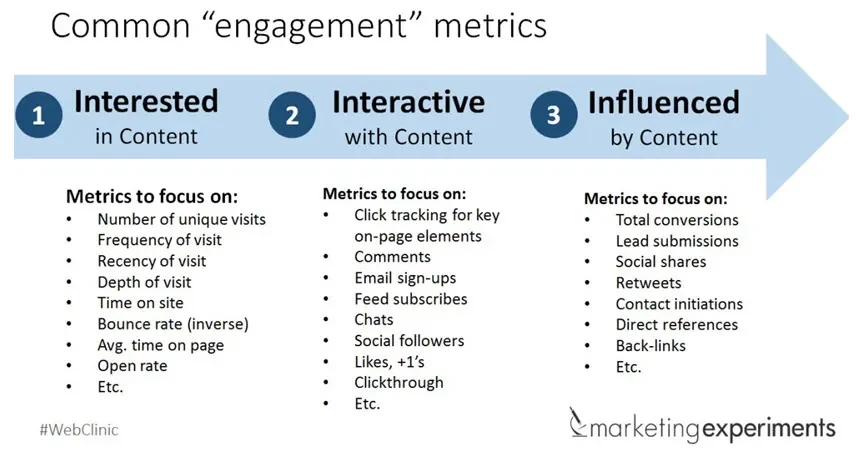
If someone pauses to drop a comment or share your post, it’s a strong signal that your content hit the mark. It also boosts visibility thanks to platform algorithms.
2. Reach and Impressions
Think of reach as the number of unique users who saw your content, and impressions as how many times it appeared on screens.
If your post is reaching tens of thousands but barely getting likes or comments, that’s your cue to revisit your messaging or creatives.
Tracking these two together, as shown in the image below, can help you balance visibility with impact. Higher reach with strong engagement signals must be a brand’s ultimate goal.
3. Follower Growth Over Time
A growing follower base over most social media platforms is indicative of your brand gaining traction.
When you monitor follower growth trends over time, it helps you pinpoint which campaigns drove a spike and which didn’t quite land. A campaign that boosts followers by 10%? That’s the kind worth acting on and scaling.
The chart below shows monthly follower growth, highlighting spikes in February and July and dips in April and September – useful for evaluating campaign impact and audience trends.
4. Profile Visits
When your target users land on your profile after seeing a post or ad, it means they’re curious to learn more.
Profile visits are often a precursor to conversions, follows, or DMs, and they indicate that your content is not just visible, but intriguing.
The image below is from Instagram insights, and it shows a weekly drop of 204 in profile visits, indicating reduced interest or lower-performing content during the June 17–23 period.
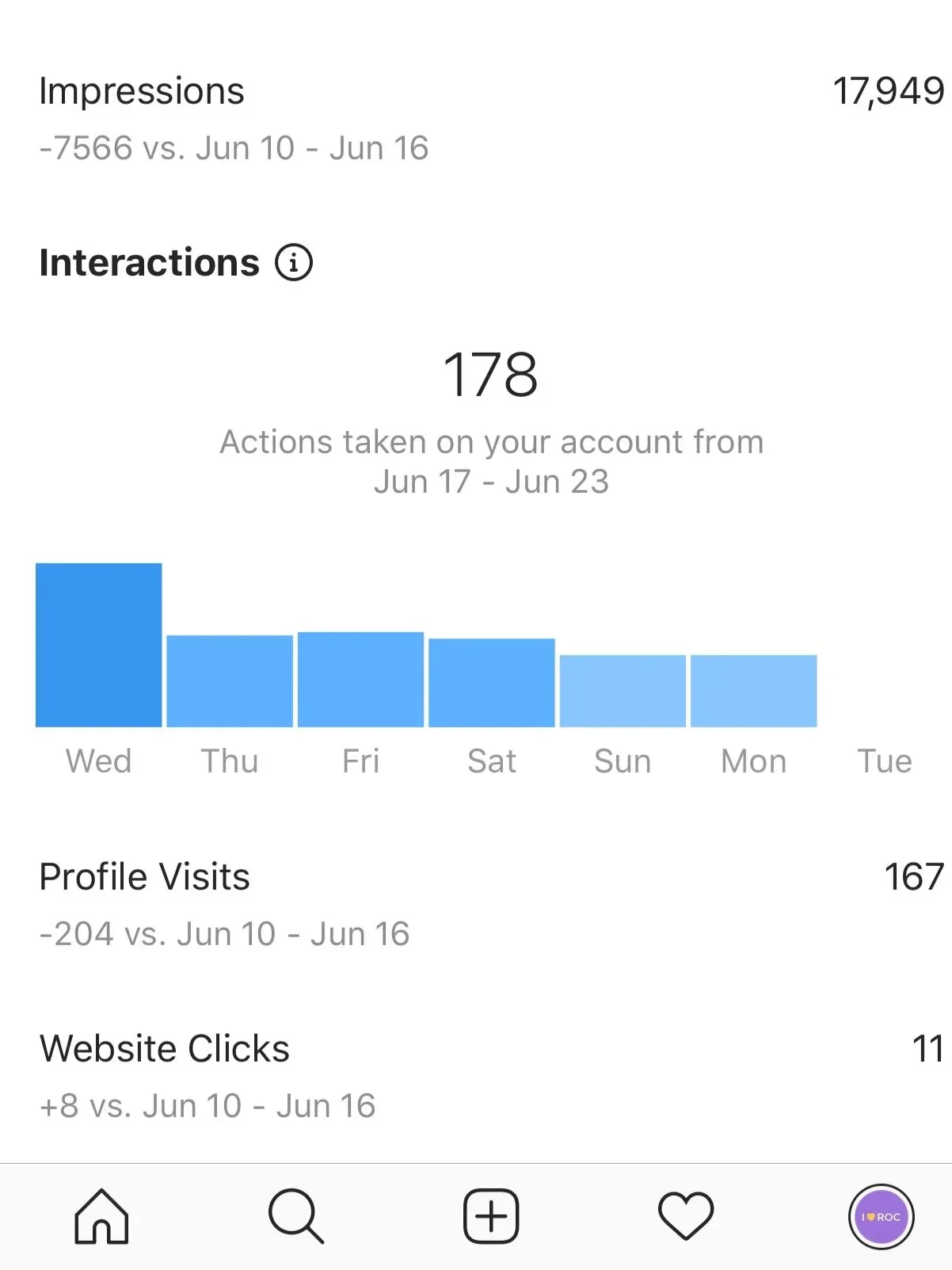
Not all engagement is created equal. Brand sentiment helps you understand whether the conversations about your brand are positive, neutral, or negative.
The sentiment timeline below shows that 69% of brand mentions for Buzz Cola were positive, indicating strong audience approval, with minimal negative sentiment at just 5.4%.
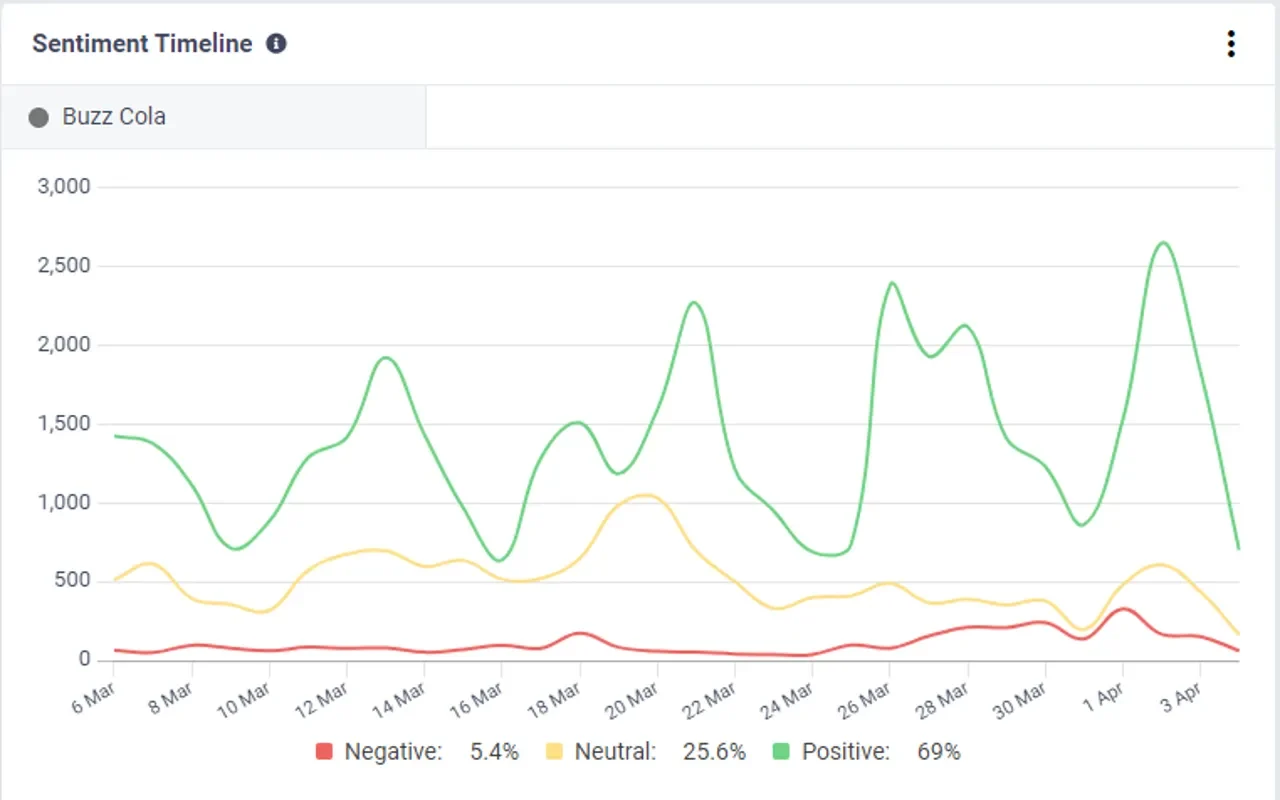
Pair that with your share of voice – how often your brand is mentioned compared to competitors – and you get a pulse on your market positioning. If your brand’s barely in the conversation, it’s time to turn up the volume.
6. Demographics
Knowing your target users or audience in terms of their age, location, gender, and interests helps you tailor your campaigns with precision.
The audience demographic in the graphic below depicts a strong reach in the United States (68%), with the highest engagement coming from women aged 18–24, indicating a young, North American-skewed audience base.
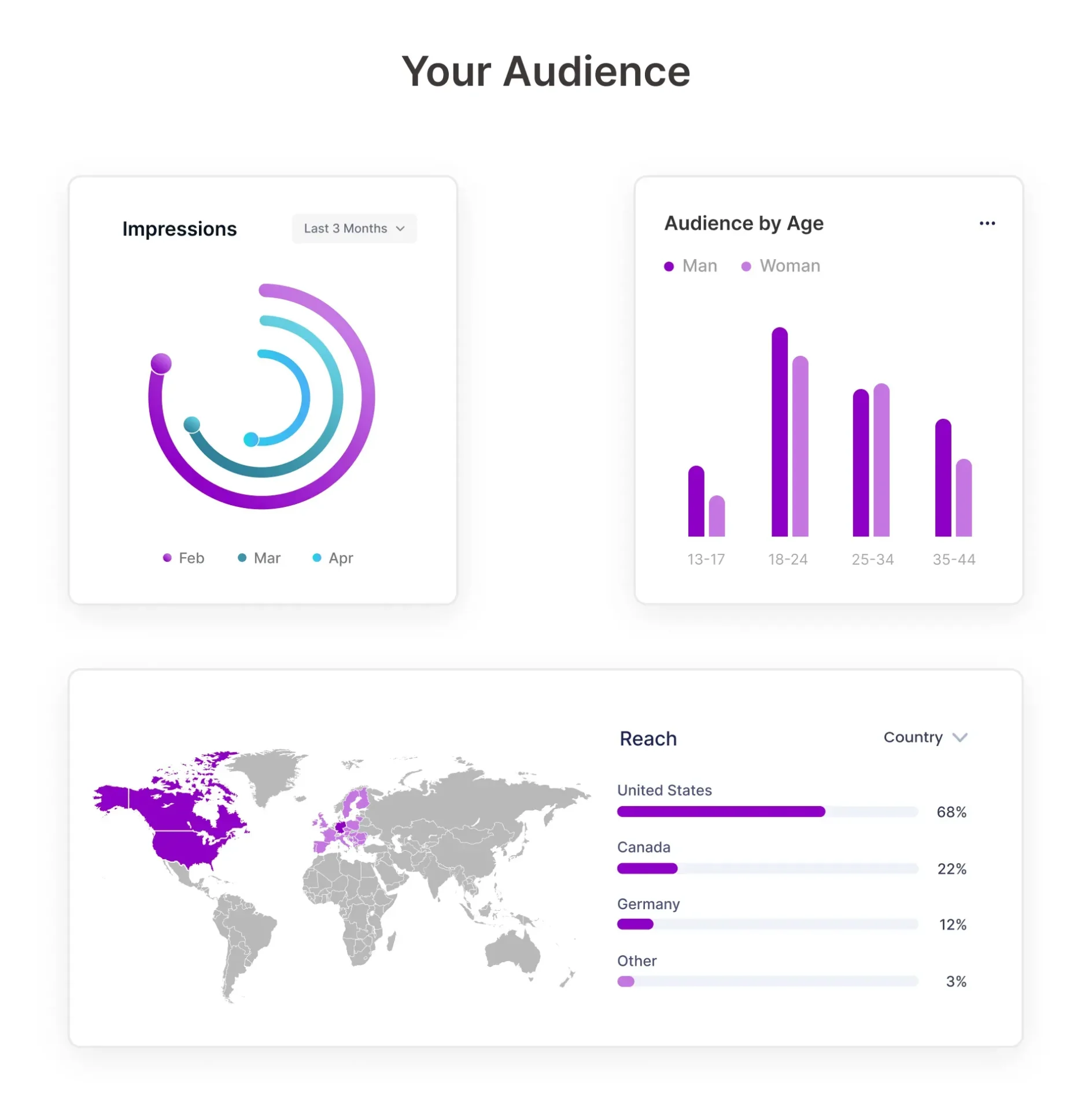
So, if your content is resonating most with 18–24-year-old women in the US, double down on creatives and messaging that cater to that group. Demographic insights are the foundation for building hyper-targeted campaigns.
We have discussed these metrics in detail in our social media analytics guide, so you can track what truly matters and optimize your strategy for better results.
Every business needs a social media analytics dashboard to track its social media data and derive some strategic insights.
The following sections will talk about native and third-party tools that are perfect for brands looking to decode social media data and drive real business growth.
Native Platform Analytics Tools
All major social media platforms come equipped with their built-in analytics dashboard, that are incredibly useful for channel-specific insights.
These native tools provide you with first-party data directly from the source, making them the ideal starting point for marketers.
Here are the key native tools you should be using:
1. Meta Business Suite Analytics (Facebook & Instagram)
If your business is building its presence on Facebook and Instagram, then Meta Business Suite is your all-in-one analytics hub. It brings together performance data from both these platforms – organic and paid – in its single, unified dashboard.
The image below shows Meta Insights Overview, highlighting key performance metrics like reach, views, and interactions on Facebook, enabling businesses to track content performance and audience engagement.
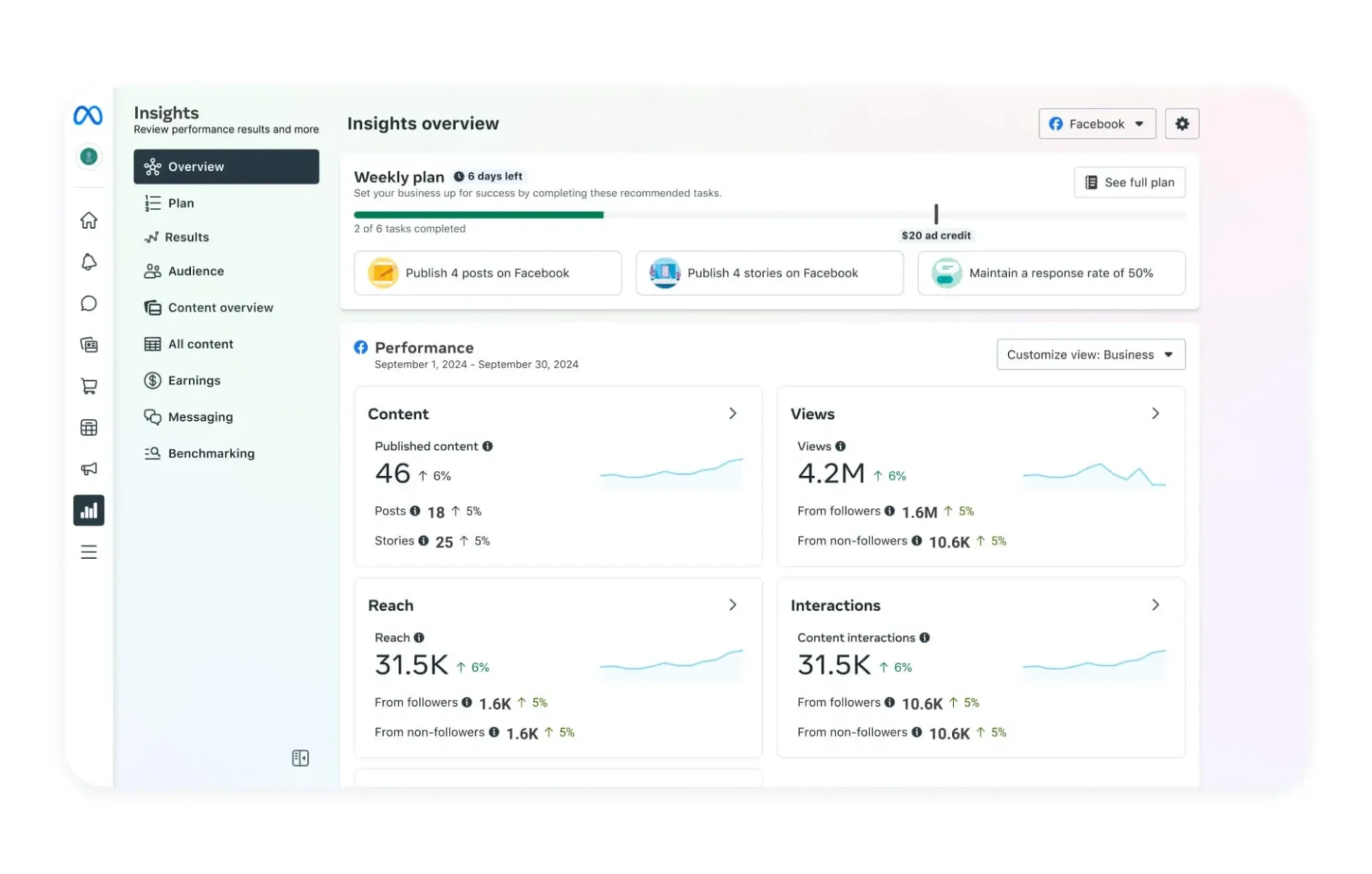
Metrics to track on Meta Insights:
- Reach, impressions, and engagement trends across posts and stories.
- Audience insights based on location, age, and gender
- Post-by-post breakdown of likes, comments, and shares
- Cross-platform ad performance and spend
Whether you’re running Facebook campaigns or testing content types, Meta’s built-in analytics let you spot patterns fast and optimize accordingly – all without switching between apps.
2. TikTok Analytics
If TikTok is part of your strategy, its native analytics tool is a must. From the Analytics tab in your Creator or Business account, you get a clear view of how your videos and profile are performing.
This TikTok Studio dashboard displays key metrics, including video views, profile visits, likes, comments, and shares, allowing creators to track their performance trends and audience engagement over the past 7 days.
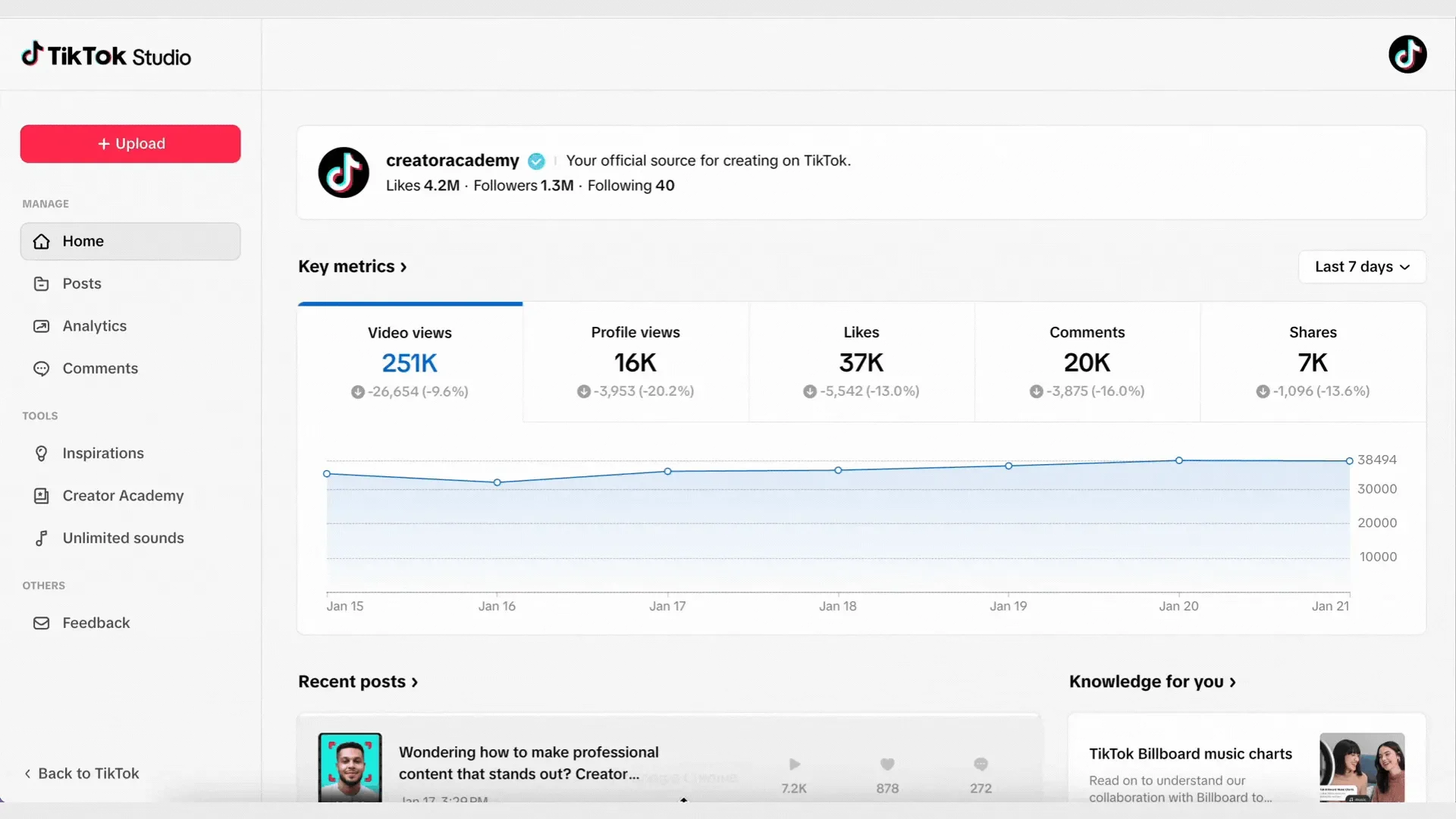
Key data points include:
- Video and profile views, likes, comments, and shares.
- Follower activity and growth trends
- Best-performing content and top traffic sources
- Audience territories and engagement timings
It’s especially useful for understanding when your followers are most active and what content themes drive views. It can even help you identify influencers or trends worth jumping on.
3. Twitter Analytics (Now X)
Twitter’s native analytics dashboard gives you a clean overview of Twitter data to help you understand how your tweets land with your audience. It tracks interactions in real time and is ideal for fast-moving content strategies.
This image of the Twitter Analytics dashboard displays tweet activity over 28 days, helping users evaluate their Twitter data, like post performance and audience interaction trends.
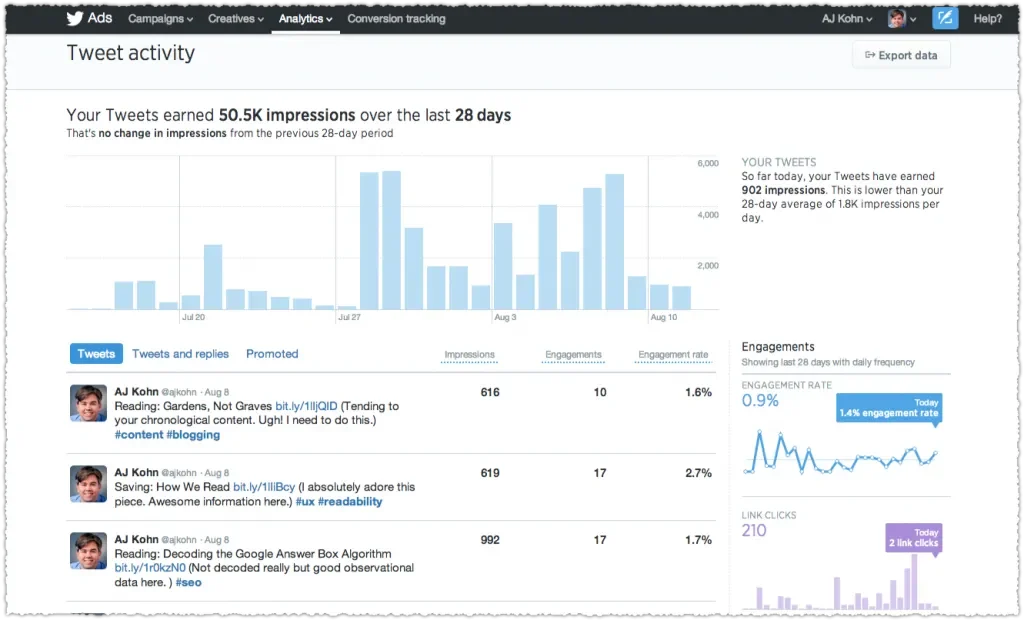
Here’s what you get:
- Total impressions and engagement rate for tweets
- Link clicks, likes, retweets, and detail expands
- Top-performing tweets by reach or interactions
- Monthly summaries showing profile visits, growth, and mentions
These metrics help brands refine their tone, test hooks, or even analyze Twitter threads versus short-form tweets in terms of reach and engagement.
4. LinkedIn Analytics
LinkedIn is all about professional credibility, and its analytics platform helps you measure how well your content builds that. From the Analytics drop-down in your company page, you can access insights across visitors, followers, content, and even competitors.
The following LinkedIn highlights show the total reactions, comments, and reposts along with a breakdown of organic and sponsored impressions from June 2023 to May 2024.
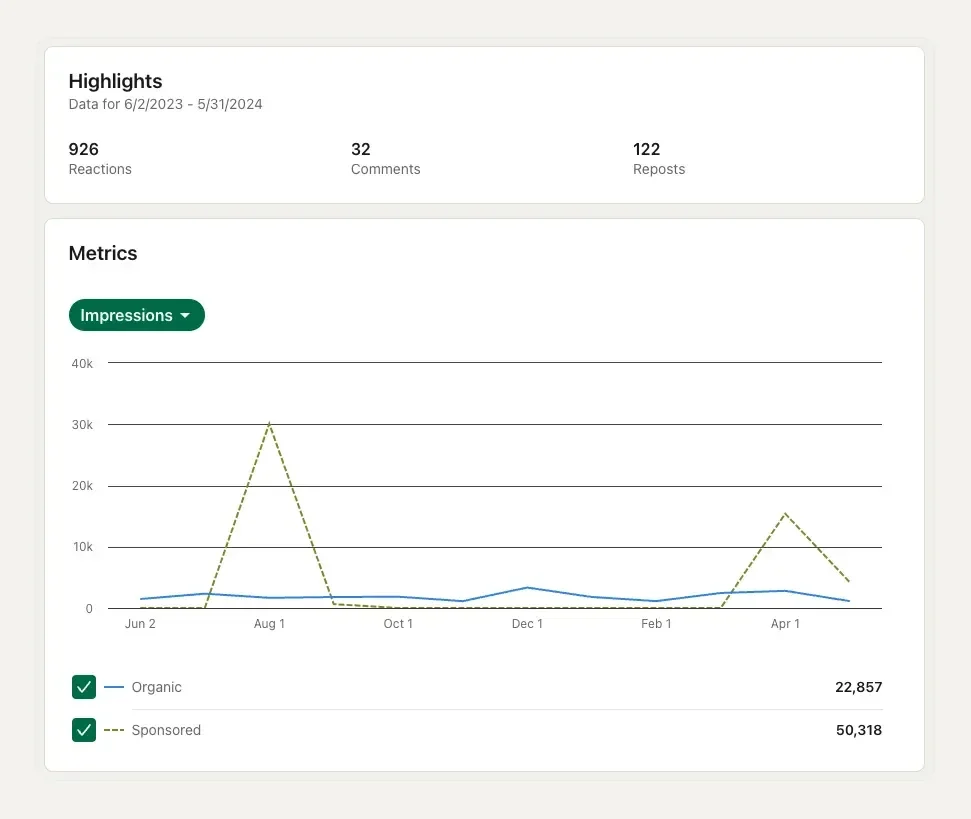
It helps you track:
- Reactions, comments, and reposts
- Who’s visiting your page and from where (industry, role, seniority)
- Sponsored vs. organic follower growth
- Click-through rate (CTR) and engagement per update
For B2B marketers and agencies, this is gold. It lets you zero in on what content builds trust and drives leads.
5. Google Analytics (For Social Referral Tracking)
While not technically a social media tool, Google Analytics is essential for tracking how your social content drives web traffic and conversions. By setting up goals and UTM tracking, you can pinpoint exactly how much value each platform delivers.
This Google Analytics dashboard displays key web performance metrics to help marketers connect social media efforts to actual business outcomes.
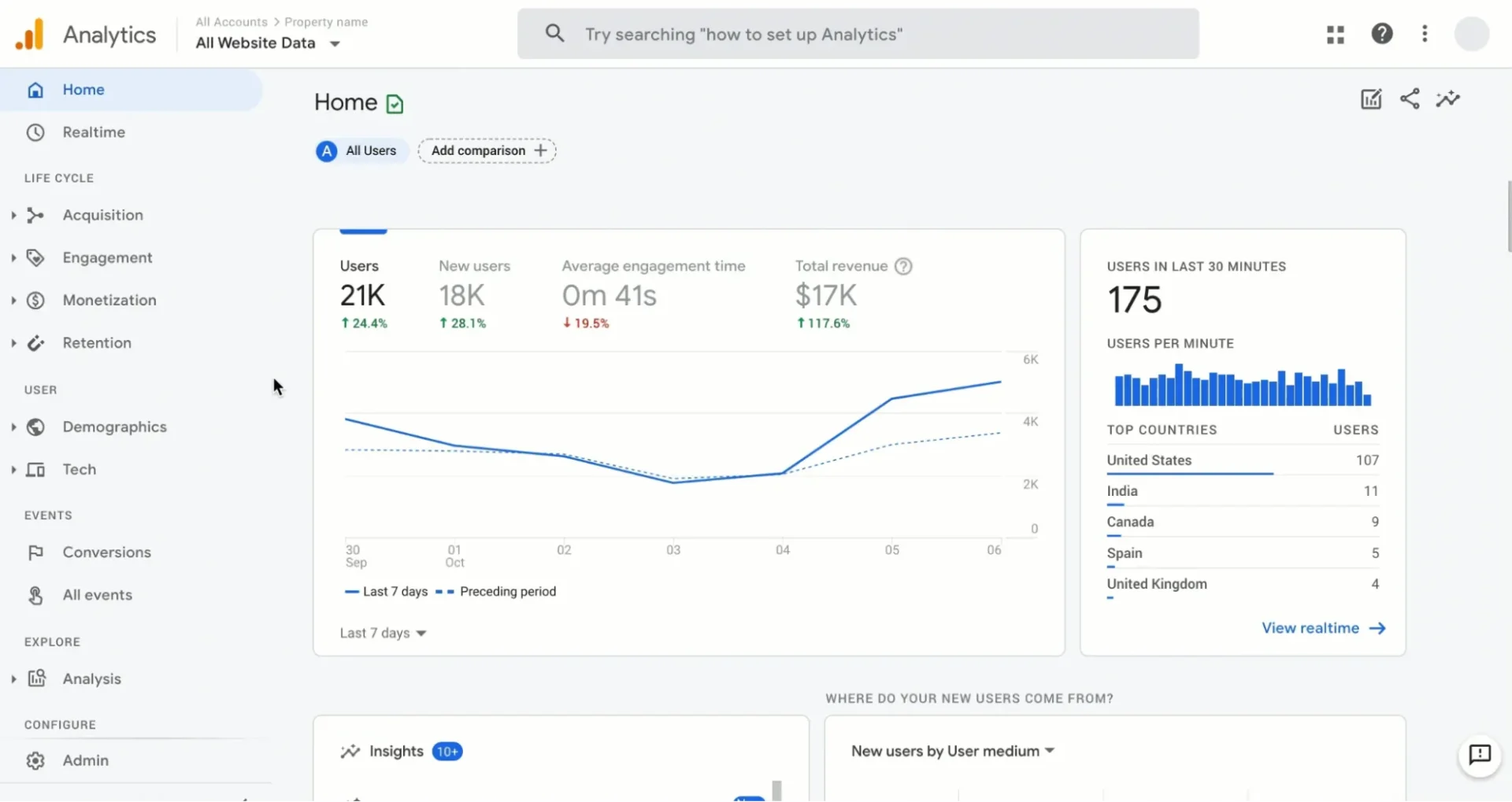
Key metrics to monitor:
- Users, new users, average engagement, and revenue per click.
- Sessions, bounce rate, and time on site from social channels
- Conversion goals (form fills, sign-ups, purchases) from social traffic
- Performance of specific campaigns using UTM-tagged URLs
- Audience demographics
It connects the dots between social activity, customer experience, and business outcomes, exactly what a marketer cares about.
While native tools give you platform-specific insights, managing social data across multiple channels quickly becomes a juggling act.
That’s where third-party social media analytics tools step in – pulling data from multiple platforms on a single centralized dashboard.
They save you time while providing a comprehensive view of your social media status. Here are three standout tools trusted by marketers, agencies, and growing brands alike:
1. SocialPilot
Looking for powerful analytics without the high enterprise-level pricing? SocialPilot is what you need. Designed for SMBs, marketers, and agencies, SocialPilot’s social media analytics tool goes beyond scheduling to offer you a bird’s-eye view of your entire social strategy using its analytics and reporting dashboard.
With SocialPilot, you can:
- Plan your content using your social media content calendar
- Track platform-specific performance metrics
- Compare content types and campaigns across accounts in one place
- Agencies can create and export white-label reports for their clients
- Monitor growth trends and audience engagement over time
- Identify best posting times and top-performing content at a glance
It’s especially useful for teams juggling multiple client accounts or businesses trying to make sense of the complex social media data.
2. Sprout Social
Sprout Social is a robust platform geared toward larger teams and enterprise users. It offers detailed analytics, competitor benchmarking, and sentiment tracking across networks – all from a unified dashboard.
With Sprout, you can:
- See engagement trends and paid vs. organic performance
- Run in-depth audience reports, including sentiment analysis and demographic shifts
- Compare your performance with industry benchmarks
- Use listening tools to monitor brand conversations and competitor mentions
The following Sprout dashboard highlights cross-platform performance, showing audience growth trends across Twitter, Facebook, Instagram, LinkedIn, TikTok, Pinterest, and YouTube.
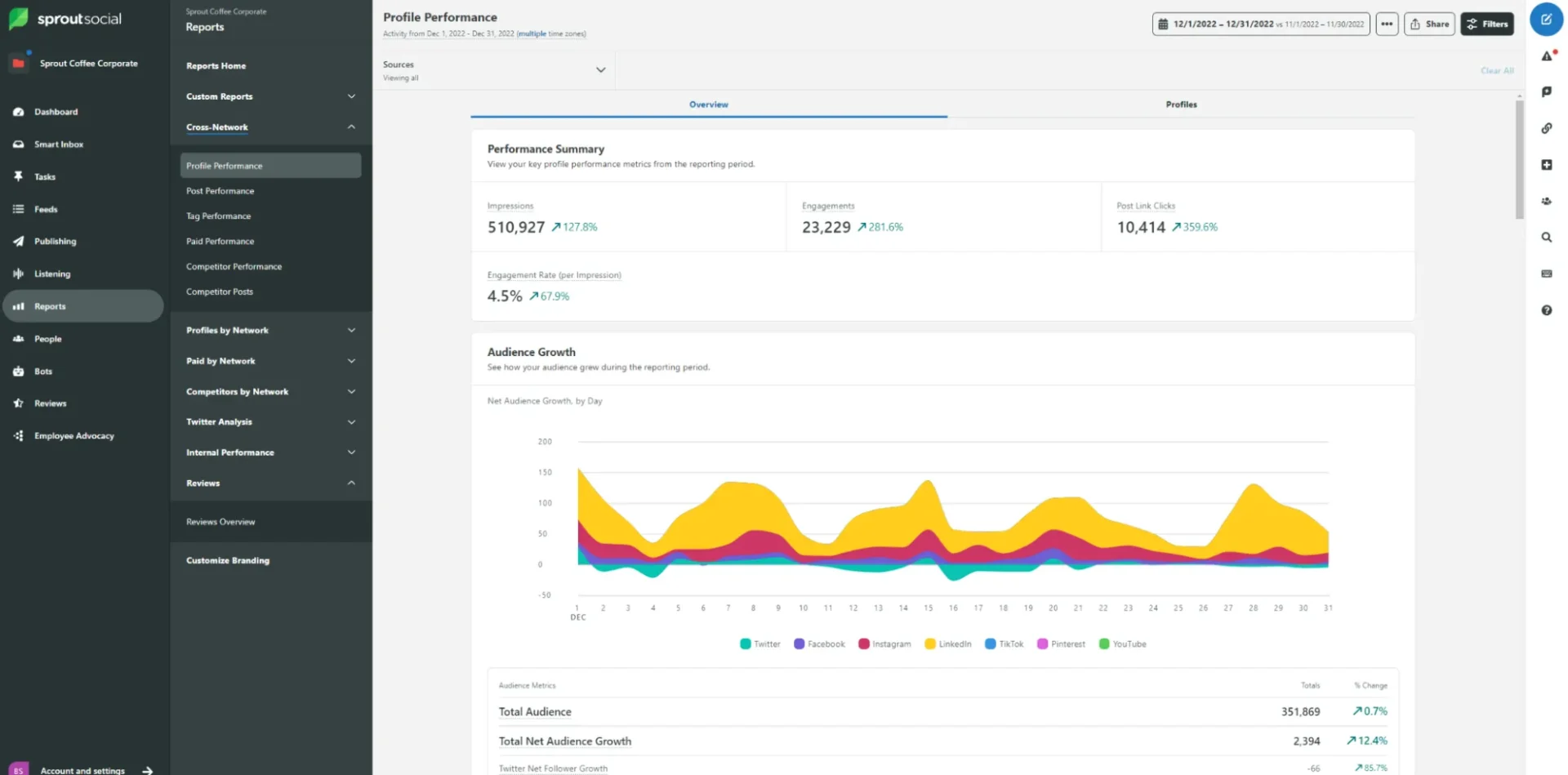
It’s a great tool for large enterprises, but it comes at a premium price. Best suited for businesses looking for deep data and advanced collaboration features.
3. Hootsuite
Hootsuite is another veteran in the social media management space. Its analytics features allow you to measure everything from brand awareness to conversion goals across multiple platforms.
Here’s what Hootsuite helps you do:
- Create customizable dashboards with real-time performance data
- Track KPIs across all accounts from one interface
- Integrate with Google Analytics for deeper web traffic attribution
- Benchmark your engagement against competitors or industry averages
This Hootsuite Analytics dashboard provides a year-in-review snapshot, tracking content volume, mention trends, and total engagements across multiple social platforms.

Hootsuite’s strength lies in its flexibility – you can build reports tailored to specific teams, regions, or goals.
The ultimate aim behind collecting social metrics is to derive useful insights that help them grow their business.
Given that today’s users’ behavior changes every minute, real-time insights are your biggest competitive edge.
Let’s break down exactly how you can use this data to fuel smarter growth:
1. Make Decisions Backed by Insights
The modern consumer journey is more complex than ever before. A Google Study reveals that a single purchase decision can involve multiple touchpoints, depending on the complexity of the purchase.
At the same time, customer expectations are at an all-time high. That’s why your data strategy needs to connect the dots across platforms and deliver a consistent brand experience. If it doesn’t? You risk losing their trust and their business.
Use your social media data to understand the minds and motives of your customers. You can understand your customer journey by tapping into real-time performance metrics and user feedback.
Based on this, you can refine your audience targeting and build a marketing strategy grounded in facts, not assumptions.
2. Enhance Your Campaign Performance
Social media data allows you to dissect every part of your campaign and optimize it with precision. Here’s how:
- Identify what content format works best for your brand by comparing engagement metrics.
- Refine your messaging using sentiment analysis.
- Optimize your posting time based on when your audience is most active.
- Know your audience and tailor your campaign to your micro-audience for better relevance and higher conversion rates.
- Perform A/B testing for your creatives.
- Combine social referral data with UTM tracking and pixel data to understand which posts actually lead to signups, purchases, or form fills.
3. Conduct Competitor Analysis
Your competitors are publishing on social media, and every time they post, you get a data point you can learn from. Here’s exactly how marketers can conduct competitive analysis using social media data:
- Track how often your competitors post and at what times. This helps you identify gaps (e.g., are they ignoring weekends?) and refine your scheduling strategy for visibility.
- Monitor which formats and themes are resonating with their audience.
- By tracking the hashtags and keywords competitors consistently use, you can uncover what topics they’re dominating – and which trending conversations you can join or lead.
- Adopt social listening practices to understand how people feel about their campaigns.
- Look for recurring complaints, praise, or feedback loops – they’re your opportunity to differentiate.
- Use ad libraries to peek into their promoted content, messaging, formats, and CTAs.
Competitive intelligence gleaned from social data enables you to outsmart your competitors without outspending them.
4. Proactive Crisis Management
Managing a crisis in business is not just about reacting fast, but also detecting it early.
Social media data, particularly sentiment analysis and real-time monitoring, acts as your frontline defence
Here’s how marketers can stay ahead:
- Track negative sentiment spikes using tools like Brandwatch or Talkwalker. These platforms analyze tone across mentions, comments, and shares, alerting you when the public mood shifts.
- Set up alerts for branded keywords, hashtags, and product names to catch emerging issues as they happen.
- Monitor competitor crises to learn from their missteps and anticipate similar risks in your own campaigns.
Instead of finding out about a PR issue in a headline, you’ll spot the trend when it first surfaces in a thread or TikTok comment and stop it before it spirals.
5. Real-Time Adaptation
Social media is dynamic, and your strategy should be too. Real-time data empowers marketers to adapt campaigns mid-flight based on what’s actually working, rather than relying on end-of-month reports.
Here’s how to leverage that speed:
- Track your live performance using metrics like CTR, engagement rate, and CPC as your campaign runs. If a creative underperforms, swap it before it eats your budget.
- Use real-time social listening to capitalize on relevant conversations while they’re hot.
- Redirect your budget from low-performing platforms or creatives to high-performing ones in real time to maximize ROI.
Real-time adaptation is what separates an agile brand from an outdated one.
Ready to Turn Your Data Into Real Growth?
Social media is not just a platform for posting – it’s also a place where you observe, listen, learn, and lead with data.
From choosing the right metrics to using the right tools, it’s all about making the most of your social media data collection.
So, if you are still confused about which tool to use, something that simplifies multi-platform tracking without burning a hole in your pocket, then SocialPilot is a must-try
With SocialPilot, you get an easy-to-use, all-in-one analytics platform that pulls all your data so you can analyze and act on it.
Ready to try it yourself? Start with our free trial and unlock the full power of your social media data.

